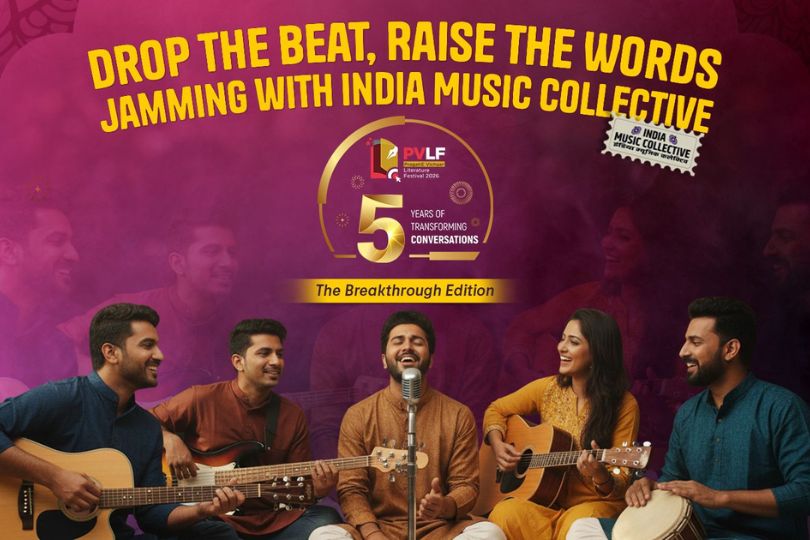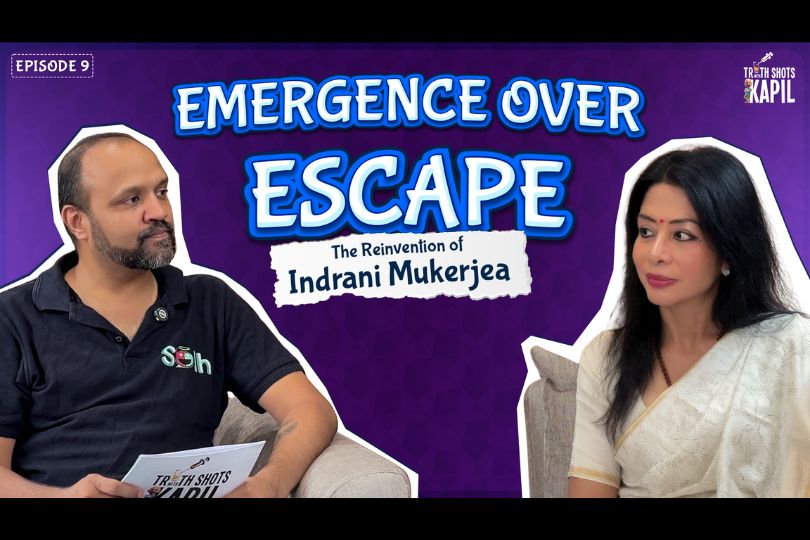Interview with Ameya Narvankar, Author of “Ritu Weds Chandni”
Interview with Ameya Narvankar, author of "Ritu Weds Chandni," discussing LGBTQ themes in children's literature and promoting diversity and acceptance.on Jun 13, 2024

Ameya Narvankar is a multidisciplinary designer, visual artist and bookmaker from India. An alumnus of IIT-Bombay, Ameya believes in the power of design to bring about change, which he hopes to achieve through his foray into children's literature. He loves, in no particular order, cats, bearded men and Beyoncé (who doesn't?). Connect with him at ameyanarvankar.com and @ameyazing on Instagram.
Frontlist: "Ritu Weds Chandni" is an amazing children's book that explores themes of love, acceptance, and standing up against prejudice. What inspired you to write this story, and why did you choose to focus on a same-sex wedding as the central theme?
Ameya: "Ritu Weds Chandni" has academic origins and is the outcome of my Master's in Design thesis project at IDC, IIT Bombay. I explored the subject 'The Visibility & Representation of LGBTQ in Indian Society,' where I examined various portrayals of the queer community in popular media and art, focusing on those catered towards younger audiences. I found that the mainstream has shied away from accurate representation, and often, the depictions have been cruel and downright homophobic. As a queer man who grew up on a staple of Bollywood in the 90s, these depictions always bothered me. "Ritu Weds Chandni" is an attempt to create better avenues for representation, address homophobia, and sensitize children towards the community.
Frontlist: LGBTQ+ themes are still relatively uncommon in mainstream children's literature. What challenges did you face in creating a story that is both informative and age-appropriate?
Ameya: As part of my initial research on a design problem, I had to speak to my users, in this case, children. Given the topic's sensitive nature, this was not possible, and I had to rely on parents, teachers, and caregivers. This was eye-opening because I realized the extent of direct information I could share while keeping it relatable for the reader. To facilitate this, my story is written from the POV of a child – 6-year-old Ayesha – and is set against the backdrop of a wedding, a concept most of us are familiar with right from childhood. For Ayesha, her didi's wedding is no different from that of her Deepak bhaiya's wedding. She sees it as every other happy family occasion, a union of two individuals coming together to celebrate their love.
Frontlist: As a designer and visual artist, do your artistic sensibilities influence your writing process? How did you envision the characters and their world in "Ritu Weds Chandni"?
Ameya: Indeed, I think in pictures! After I had a rough plot structure outlined, I storyboarded the entire book with sketches and placeholder content, and the story was eventually fleshed out. The thesis draft of the story had rhymes and verbal metaphors; however, it underwent multiple iterations after being picked up for publication to make it palatable to children. The metaphors became more visual, and we dropped the rhymes for a simpler, linear narrative. The baraat (wedding procession) is pivotal to the story and is a strong visual metaphor that parallels a pride parade, both celebrating the act of being publicly visible and brave. The resistance the baraat faces is again metaphors visualized – high horses, words made of knives, and rain on my parade.
Frontlist: Ayesha, the young protagonist, plays a pivotal role in the story. Why did you choose to tell this story from a child's perspective? How does her viewpoint contribute to the narrative's message of acceptance?
Ameya: Children are good observers and have questioning minds. By choosing Ayesha as the protagonist, young readers can place themselves in her shoes as she tries to make sense of the stigma and resistance faced by her cousin's wedding. She asks 'why?' at every occasion and only wants her cousin to be happy. Her reasoning, while innocent, stumps the adults who have probably been conditioned to view LGBTQ relationships in a negative light. This helps establish the narrative's message that children are not born homophobic but are rather conditioned by society. The idea is to inculcate a sense of critical thinking within the children and help them realize that every person, irrespective of race, caste, gender, or sexuality, has the right to lead their life with dignity and freedom.
Frontlist: Going beyond the love story, the book also delves into the challenges same-sex couples face. How did you portray these challenges while maintaining a hopeful and heartwarming tone?
Ameya: Given my audience was children, I wanted the story to have a happy ending, but at the same time, I did not want to mask the harsh realities the LGBTQ community faces in our country. Many members of the community have come out over the years and become visible in the public eye despite the associated risks of stigma, alienation, and threats of violence. Their visibility validates the community's existence and inspires more individuals to come out. I want children to understand the challenges that a queer person would face, but also to let them know that 'it gets better' eventually. There will be resistance, but you will also find allies and family among friends.
Frontlist: Finally, looking ahead, what are your hopes for the future of LGBTQ+ representation in children's literature, and how do you plan to continue advocating for diversity and inclusion for the LGBTQ+ community through your work?
Ameya: The diverse picture books market is growing every year. New-age parents actively seek such books to facilitate open conversations with their children on sensitive subjects. Several titles have been released in India too. I hope that queer characters become more commonplace in children's literature and their stories are nuanced beyond their sexual orientation. It will be interesting to read stories about queer protagonists from different historical periods or during India's freedom struggle.



.jpg)






.jpg)


.jpg)
.jpg)
.jpg)
.jpg)
.jpg)

.jpg)










Sorry! No comment found for this post.